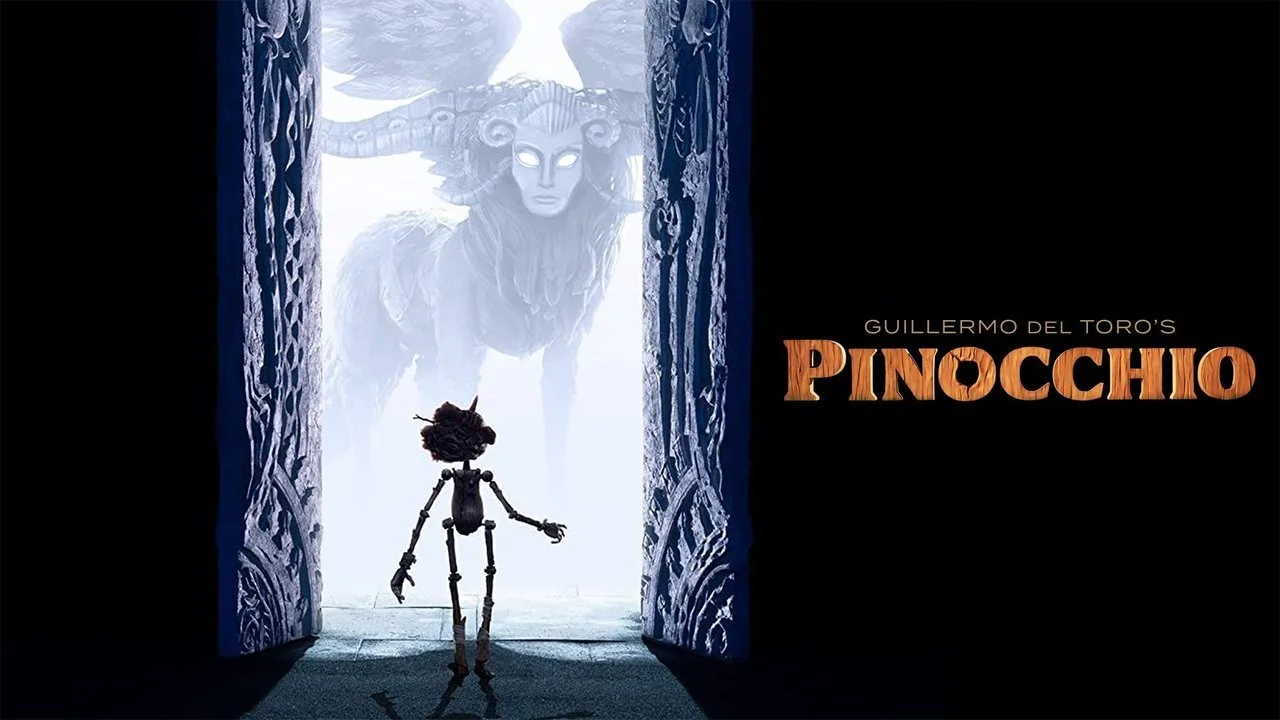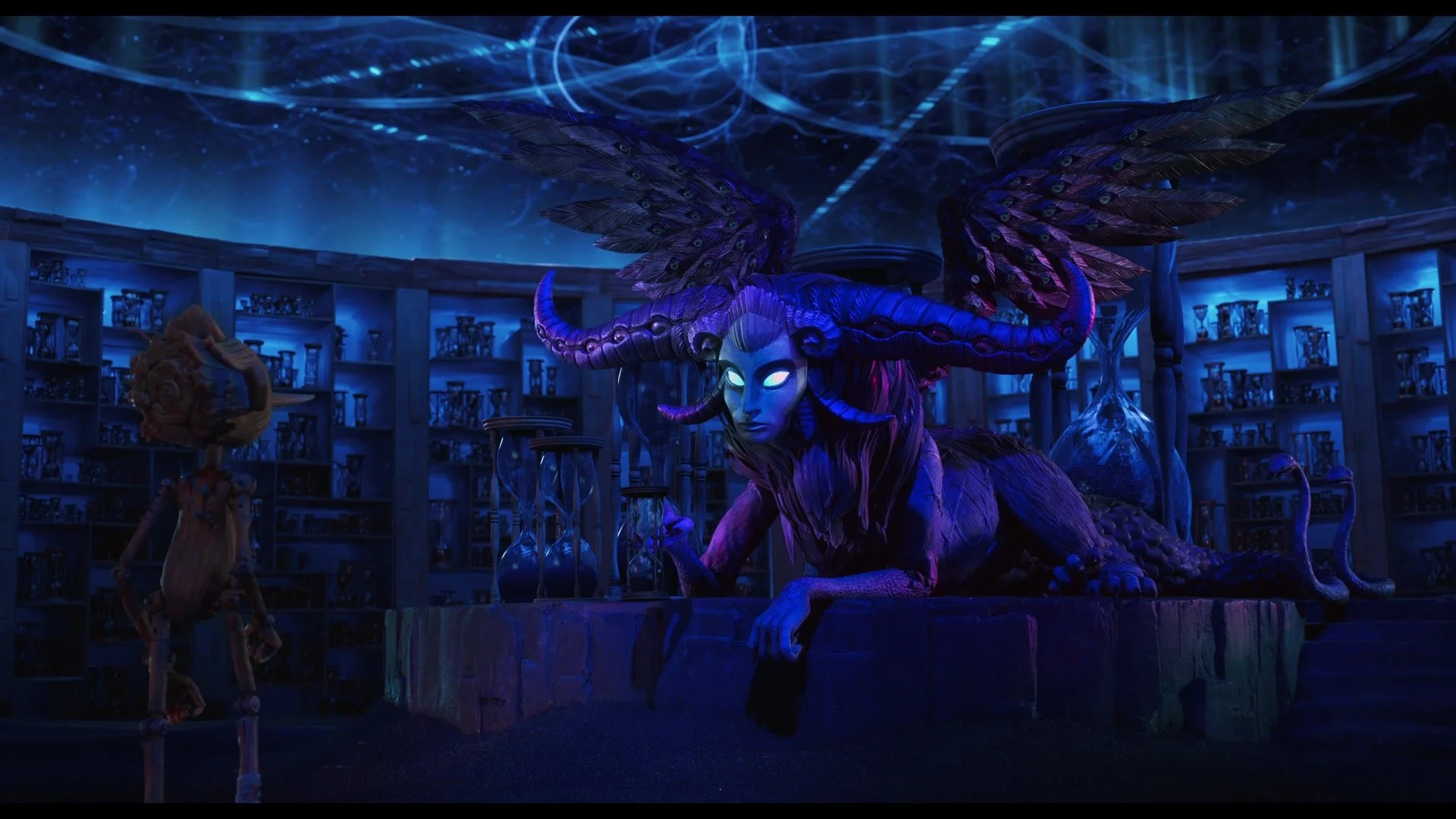From the infamously visionary and imaginary mind of Guillermo Del Toro (and co-director Mark Gustafson) comes the newest take on the classic story of Pinocchio and despite being both of those things, the stop-motion feature fails to stick the landing. The animated film follows the story we all know well but with a few changes here and there, more fitting to Del Toro’s direction. Following the classic narrative, we open with a grieving Geppetto (David Bradley) after losing his son to an ongoing war in Italy (here, the welcome changes made by Del Toro are already being noted). To cope with this loss, the woodworker creates a puppet similar to the likes of his son. Unbeknownst to him, however, a Wood Sprite (Tilda Swinton) brings it to life and grants the wooden puppet the name of Pinocchio (Gregory Mann). From here, Pinocchio gets him and his pseudo-father into trouble ranging from working for a seedy, opportunistic carnival owner, Count Volpe (Christoph Waltz), enlisting in a war camp for young boys and finding themselves in the stomach of a whale. Even considering the dazzling animation and excellent voice performances, it is not enough to save the film from its dull plot and awkward pacing.
From the summary provided alone, it’s clear that Del Toro has taken many artistic liberties in adapting this story. From placing the story in Italy during Mussolini’s reign to make an anti-fascist statement to sending Pinocchio to a war camp in replacement of the iconic Treasure Island to express anti-war sentiments, and even discussing mortality with the addition of new lore involving a Wood Sprite and the afterlife. All of these variations from the source material are embraced, especially for a story that’s been reimagined time and time again. The issue lies in the fact that the film only dips its toes into these changes and never fully embraces them for the sake of not straying too far from Carlo Collodi’s original story.
The better part of the film is spent on Pinocchio performing for the carnival troupe and being taken advantage of by Count Volpe. We then spend only a mere 20 minutes in the war camp compared to the 40-50 minutes spent on the former plot point. Had screenwriters Del Toro and Patrick McHale spent more time discussing the relevant and fresh themes that attempted to breathe a new life into Pinocchio, it would have elevated the film. Instead, more time is dedicated to rehashing tired story beats we’ve already seen before.
Guillermo Del Toro’s Pinocchio
Playful character design and stunning lighting make Guillermo del Toro’s a visual treat as seen here in Pinocchio’s (Gregory Mann) first foray into the afterlife where he encounters the Wood Sprite’s sister (also voiced by Tilda Swinton).
It would be remiss of me not to acknowledge the sheer talent and creativity on display in Pinocchio. The stop-motion animation is simply a sight to behold and it is undoubtedly the star of the show. The expansive landscapes that add to the scale of the story, the unique character designs, and lighting all culminate in a stimulating visual experience. Noteworthy are the vocal performances of everyone in the cast. Particularly, Gregory Mann as Pinocchio brings a juvenile, lively, and endearing charisma to the character that’ll have you grinning from ear to ear. The solemn and sorrowful Geppetto is played by David Bradley who evokes empathy from the audience with his accurate portrayal of someone in his shoes. Perfectly cast as Sebastian J. Cricket (definitely not Jiminy Cricket) is Ewan McGregor who is suited for the wise and witty remarks the character is known for. Of course, I couldn’t forget about Cate Blanchett’s committed performance as a non-verbal monkey Spazzatura; a performance I didn’t know I needed to witness before this.
It’s no shock that Del Toro can make a competent film, a visually stunning one at that. But that’s about all Pinocchio has going for it. At a two-hour running time, enchanting visuals and alluring direction are not sufficient enough to pick up the film’s sluggish pace and make up for its surface-level exploration of enticing themes Del Toro and McHale introduce. My nose would grow if I said I can wholeheartedly recommend this; Guillermo del Toro’s Pinocchio seems fit for those that are either nostalgic for the classic tale or for animation enthusiasts. Apart from that, it pains me that the film was too hesitant to explore its darker themes in full, resulting in a meandering and boring take on the wooden puppet turned living boy.
Verdict: Unfortunately, Guillermo Del Toro’s Pinocchio is a Nick Skip due to its inability to be much beyond superb visuals and excellent voice acting.

